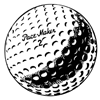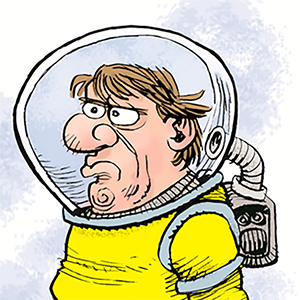The Therapeutic Benefits of Being Strapped In
Published in Health & Fitness
For most, the sight of a straitjacket conjures images of outdated asylums, harsh treatment, and stark walls. But a small but growing group of therapists, patients, and enthusiasts are reframing this once-feared garment as a potential tool for calm, control, and self-discovery. Far from the punitive devices of the past, modern adaptations of the straitjacket are being embraced in therapeutic and personal wellness settings where safety, consent, and psychological grounding are central.
A Sense of Containment
At its core, a straitjacket is designed to restrain the arms and upper body. While historically this was often associated with abuse, advocates today describe a very different experience: a profound sense of containment. For some, the physical reality of being unable to flail or fidget provides a kind of enforced stillness that quiets the mind. “It’s like having all the background noise turned down,” said one user. “I stop worrying about what my hands are doing, or where I should put them. I can just be.”
This phenomenon, therapists explain, is not unlike weighted blankets or pressure vests used for sensory regulation in children and adults with autism or anxiety. The pressure and snugness of a straitjacket can deliver similar benefits—but in a more complete and immersive form.
Modern Uses
Today’s therapeutic straitjackets are far removed from the coarse canvas and neglect of earlier eras. They are manufactured from softer, breathable fabrics, with adjustable fastenings that ensure both comfort and safety. Sessions are conducted under supervision, with wearers setting their own boundaries for how long they remain inside.
Some counselors incorporate the practice into guided therapy, using the restraint as a tool to help patients explore issues of control, trust, and vulnerability. Others find it helpful for grounding clients during moments of high stress or panic. A few individuals use the jackets at home as part of mindfulness routines, slipping into one when they want to meditate, journal, or simply reset after a stressful day.
Empowerment in Stillness
What surprises many who try it is how empowering the experience can feel. Instead of stripping away autonomy, being strapped into a straitjacket—when chosen voluntarily—creates a space where external choices fall away, leaving only the self. “I don’t feel powerless,” one woman explained. “I feel focused. I laugh more, I notice my breathing, I even notice the way my toes shift against the floor. I get to live in the moment.”
Experts caution that this practice is not for everyone. Those with trauma tied to restraint or confinement may find it triggering rather than soothing. But for a select group, the straitjacket has become an unexpected ally in therapy and daily life—a way to find calm in stillness, and even joy in being, for once, held firmly in place.
As one therapist put it: “The paradox is that restraint, when chosen and safe, can actually feel like freedom.”
========
The article was created, in part, utilizing AI tools.










Comments